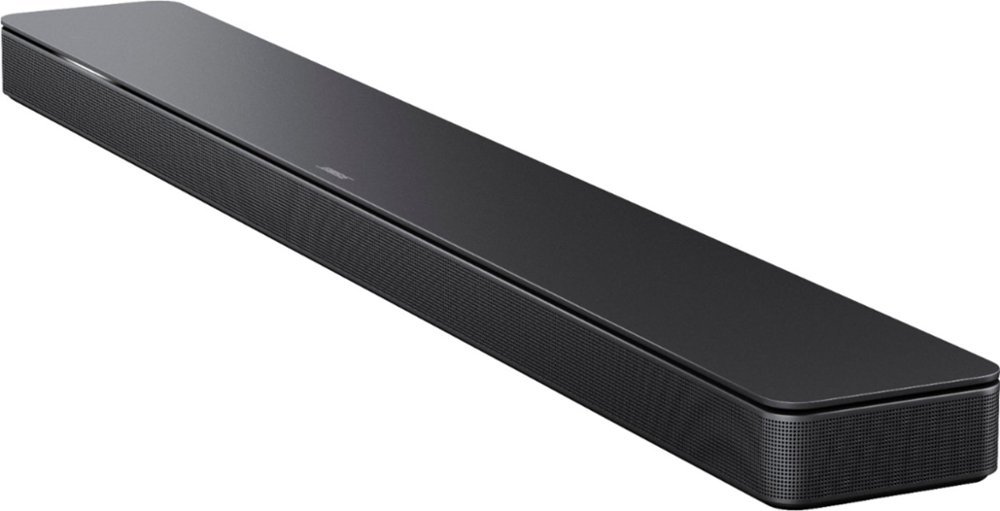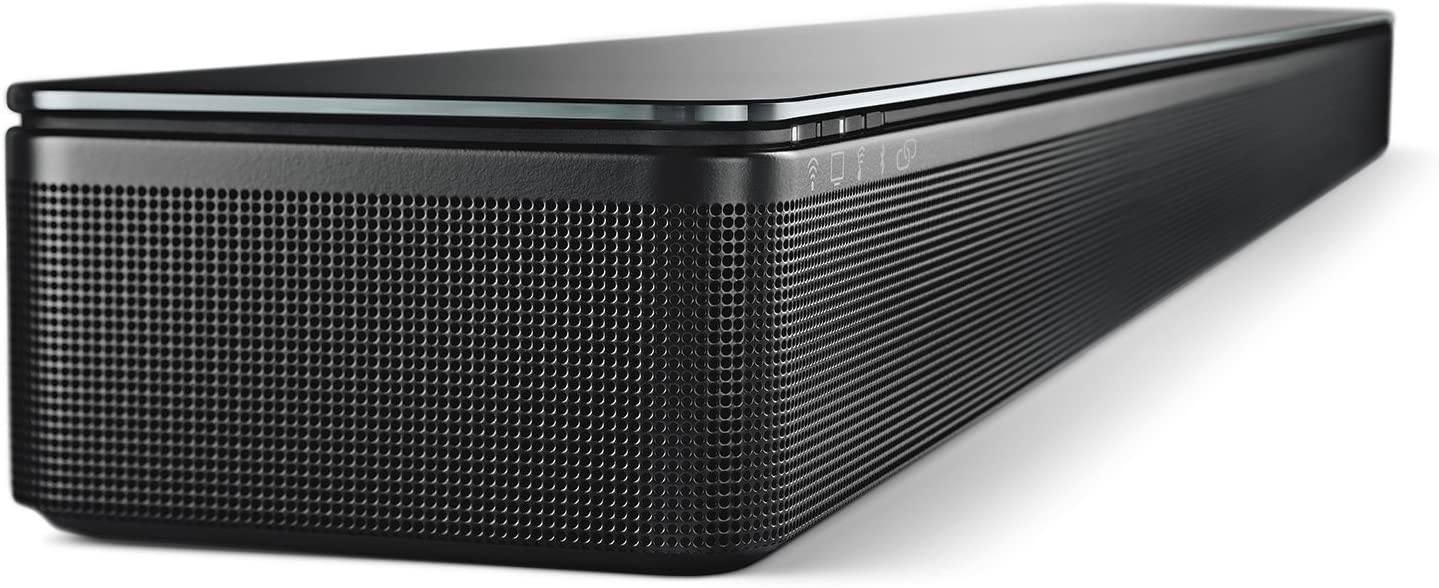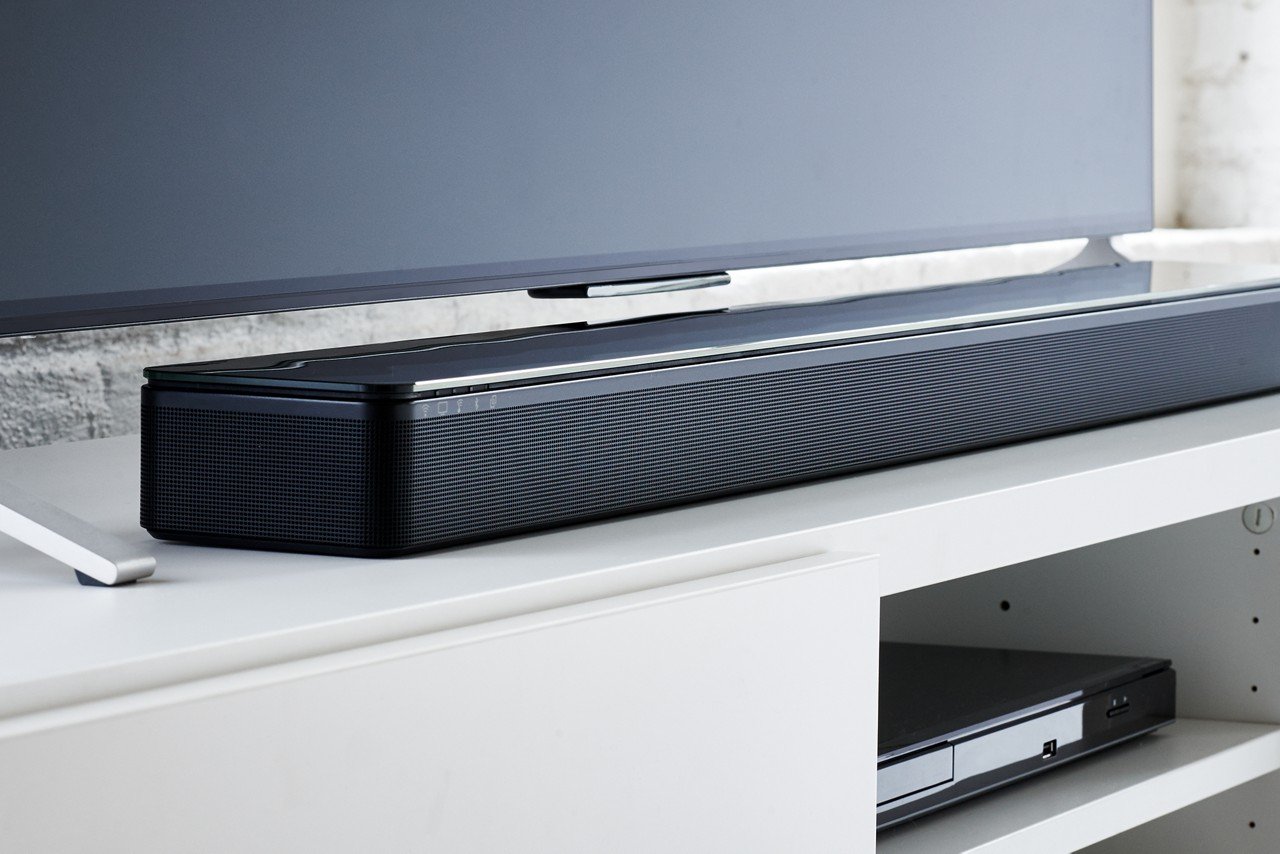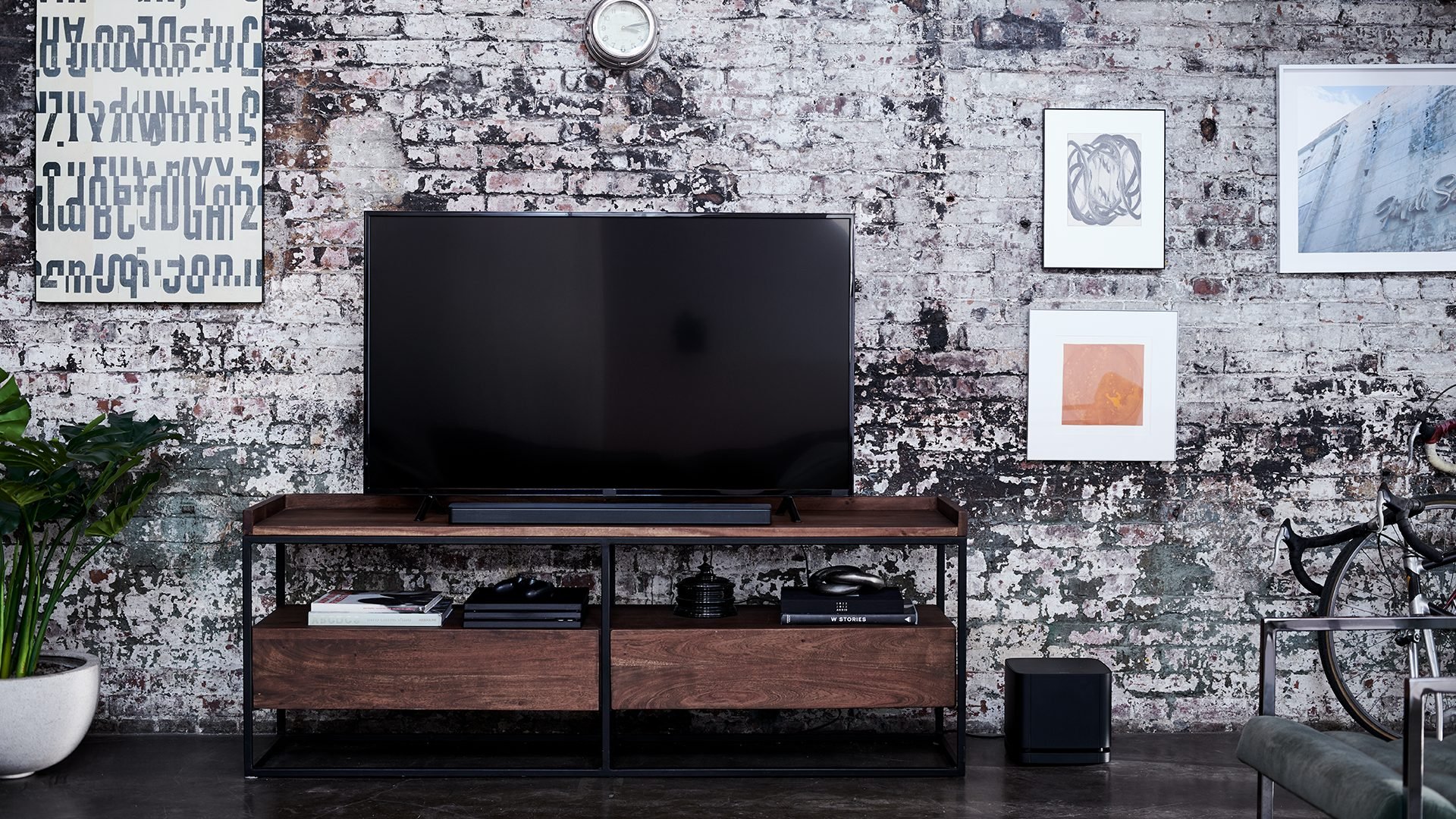Bose Soundbar 500 vs. Bose SoundTouch 300: Which should you buy?
Smarter, newer and more connected
Bose Soundbar 500
Pros
- Built-in Alexa, Google Assistant commands
- AirPlay 2 support
- SimpleSync with other Bose devices
- eARC HDMI input
- Lower price
Cons
- No included subwoofer or dual speakers
- No 4K passthrough
- Only one HDMI input
The Bose Soundbar 500 is all about connectivity. You can natively stream most music platforms, connect to your TV via eARC HDMI, control your soundbar and TV through Alexa or Google Assistant voice commands, or sync with Bose or Apple speakers for a multi-room system. Its one drawback is that for a smallish 3.0-channel soundbar with no subwoofer, you're paying for features more than audio performance.
Improved speaker tech
Bose SoundTouch 300
Pros
- Wider soundstage
- PhaseGuide arrays
- 4K / HDR10 passthrough
Cons
- Expensive for 3.0ch soundbar
- No built-in voice assistants
- Only one HDMI input
- Only works with older Bose app
This Bose soundbar uses its larger build to eke out a louder, richer sound that uses internal arrays and personalized room calibration to better fill your space. It enables both HDMI ARC and 4K passthrough depending on your TV's abilities and syncs up with other SoundTouch speakers. However, it lacks some of Bose's latest advances and is priced too high for limited returns.
Bose charges a premium for its 3.0-channel soundbars compared to the market rate, expecting you to pay extra for special features and loyalty to the Bose brand. Yet when choosing between the recently launched Bose Soundbar 500 and the older, larger Bose SoundTouch 300, the former justifies its high price more than the latter. The 300 may have a wider soundstage and 4K passthrough, yet it lacks the 500's smart home qualities that make it easier to control and to connect with other devices in your home theater.
Bose Soundbar 500 vs. Bose SoundTouch 300 Sibling soundbars with similar specs
Just as when we compared the Soundbar 500 to the Soundbar 700, we found that the Soundbar 500 and SoundTouch 300 share many features in common. This means that you have a baseline of perks, and limitations, regardless of which soundbar you choose to buy.
With their equally quiet bass, the 300 and 500 both benefit from buying a Bose subwoofer down the line.
Both the 300 and 500 are 3.0-channel soundbars, meaning they have left-, right-, and center-facing speakers to fill your living room, but no separate subwoofer or separate surround-sound speakers. You can purchase Bose Surround Speakers and the Bose Bass Module 500 subwoofer to pair with either device and augment the sound performance. However, even with these accessories, you'll still only have access to Dolby Digital and DTS soundtracks, not Dolby Atmos or DTS:X soundtracks that require upward-facing drivers.
Bose's Soundbar and SoundTouch models have plenty of connectivity options: they can natively stream a variety of music platforms like Spotify over Wi-Fi (or via an Ethernet connection to your router), or you can connect your smartphone via Bluetooth to make controlling your playlist easier. As for your TV, you can connect via HDMI or optical cable.
Each soundbar ships with an ADAPTiQ headset, Bose's proprietary room calibration tech. The Bose app sends signals to the headset as you walk around your living room, helping it map out space so it knows where to direct the sound to get the best performance.
Current-gen vs last-gen specs
The SoundTouch 300 had impressive features and solid performance when it launched in 2016, but by the time the Soundbar 500 came out two years later, the benchmark for what made a soundbar "impressive" had shifted, and that shows in what each device offers.
The 300 may have HDR passthrough, but the 500's eARC HDMI connection is the better option for more devices, provided your TV can handle it.
Voice commands and smart speakers were less ubiquitous at that time, so Bose allowed the 300 to be controlled by Alexa commands, but only if you had an Echo speaker. With the 500, it responds to Alexa and Google Assistant commands independently thanks to built-in mics; you can also control it using Siri if you use a separate Apple device through AirPlay 2. Plus, integrated Bose Voice4Video allows 500 owners to control their TV through voice commands to the soundbar.
Both soundbars' single HDMI input has ARC compatibility, which improves data transfer and audio-video sync. But only the 500 has eARC, which lets the soundbar process completely uncompressed audio data. Check your TV's eARC support before buying the 500, as without it your audio quality won't live up to the soundbar's potential.
However, only the 300 has 4K, HDR, and HDR10 passthrough thanks to its HDMI output port — a useful feature when it launched since many TVs couldn't support ARC/ eARC at that time. Unfortunately, its passthrough potential is hobbled by its single HDMI input, ensuring you can only connect one device at a time.
| Bose Soundbar 500 | Bose SoundTouch 300 | |
|---|---|---|
| Size | 1.75" H x 31.5" W x 4.0" D | 2.25" H x 38.5" W x 4.25" D |
| Channels | 3.0 | 3.0 |
| Subwoofer / rear speakers | Sold separately | Sold separately |
| Soundbar drivers | Three front-facing drivers, two side-facing drivers, QuietPort bass | Four full-range drivers, one tweeter, PhaseGuide arrays, QuietPort bass |
| Voice assistants | Alexa (built-in with Bose Voice4Video), Google Assistant (built-in), Siri (through another device) | Alexa (through another device) |
| Video Passthrough | None | 4K / HDR / HDR10 |
| Connections | AirPlay 2, Bluetooth, Wi-Fi, Optical, Ethernet, HDMI | Bluetooth, Wi-Fi, Optical, Ethernet, HDMI |
| HDMI ports | 1 input, 0 output | 1 input, 1 output |
| HDMI ARC / eARC | ARC / eARC | ARC |
| Compatible audio processing formats | Dolby Digital, DTS | Dolby Digital, DTS |
| Room calibration | Included ADAPTiQ headset | Included ADAPTiQ headset |
| App support | Bose Music app | Bose SoundTouch app |
| Remote control | Included | Included |
| Bose SimpleSync | Yes | No |
The 300 generates clearer, richer audio, but the 500 isn't too far behind in performance.
With the 500 winning the feature battle, the only possible rationalization for the SoundTouch 300's higher price is its improved sound performance. As the 300 is slightly wider, it can fit an extra front-facing driver and a tweeter, which will improve the sound experience (especially treble quality) for viewers seated directly in front of the soundbar. The 500 uses two side-facing speakers to better spread sound throughout the room, while the 300 uses smaller arrays meant to direct the forward speakers in different directions based on the ADAPTiQ calibration. Neither soundbar has particularly impressive bass.
If you've bought other Bose products in the past, and want to create a multi-room speaker system, you'll want to check their compatibility with Bose's apps. The SoundTouch 300 only connects to the older Bose SoundTouch app, as do many of the company's pre-2018 appliances. Conversely, the Bose Soundbar 500 only connects to the newer Bose Music app, as do most of its tech released in 2018 or later.
Soundbar 500 > SoundTouch 300: Buy the latest model
If this is your first Bose buy, then you'll want the 500, as any other Bose tech you buy may not work with its predecessor. One important example is its Bose SimpleSync functionality, which lets you stream content through your soundbar directly to another Bose Bluetooth speaker or Bose headphones. 500 owners can send their TV audio to a speaker in another room for a synced party playlist, or directly to headphones for respectful-to-roommates late-night movie binges.
The Soundbar 500 will save you money, but to take full advantage of it, you'll want to spend a lot more on other Bose devices.
Even if you're not a Bose fan, the 500 gives buyers a versatile option that will connect with Amazon, Google, and Apple speakers you currently own or plan to buy. And as you'll save some money on the 500 versus the 300, you can put the money saved towards a subwoofer to improve bass performance, as the bass is a shortcoming of both Bose soundbars.
We noted earlier that the 300 will have better audio performance, but it's also important to note that other soundbars will give you better performance than either soundbar, at a lower price! The 500 appears on our best soundbars list as a strong option for Bose fans, but other devices in this range often have subwoofers, surround sound, or other useful perks.
What the 500 gives you is a device that can access any streaming service, is easy to command with a few words while also making your TV voice-commandable, and works with a whole ecosystem of other devices. If the 300 is tempting you with better performance, look into the Bose Soundbar 700 instead, which effectively combines the 500's features with the 300's audio tech, for a comparable price.
Smarter, newer and better
Bose Soundbar 500
Enable a multi-room, multi-speaker family
Rather than simply sell improved TV audio, Bose wants to sell you a smart home experience, with the 500 as the centerpiece. You can control it through your Google or Alexa voice commands of choice, then link it up with your other speakers for a room full of sound. However, with only audio quality as your criteria, judged on its own merits, the 500 gives a strong performance but maybe outperformed by cheaper soundbars.
Improved speaker tech
Bose SoundTouch 300
A good soundbar, but consider alternatives
The SoundTouch 300 would be easier to recommend buying if Bose decides to discount it. Its speakers and arrays remain stronger than the 500 thanks to its four full-range drivers, tweeter and PhaseGuide arrays, and it could be a solid alternative soundbar for those who have older TVs and prefer passthrough audio to eARC. Yet the limited voice commands and outdated Bose app undermine it as a viable soundbar for 2020 buyers.
from Android Central - Android Forums, News, Reviews, Help and Android Wallpapers https://ift.tt/2PFuo30
via IFTTT




No comments: